The gamers who use two screens are expecting smooth and effortless performance. However, they face a common problem, such as “second monitor lag when playing games.” This can make the overall experience frustrating or distracting, which also limits your enjoyment. In this situation, the main screen may run the game just fine, but the second one starts to freeze or stutter.
Luckily, you don't need to be a tech expert to fix this problem and get back to gaming smoothly. Hence, this guide provides you with the top 6 methods anyone can follow to overcome this challenge. When using Windows 10 or 11, these fixes will help reduce lag and enhance your gaming setup.
In this article
- Solution 1. Run the Game in Full-Screen Mode
- Solution 2. Change the Refresh Rate of Monitors
- Solution 3. Update the Display and Monitor Drivers
- Solution 4. Disable Hardware Acceleration in Your Browser
- Solution 5. Turn Off Hardware-accelerated GPU Scheduling
- Solution 6. Download and Install All Windows Updates
Part 1. Why Is My Second Monitor Lagging When Playing Games?
If your second monitor lags when playing games, it may be because of inaccurate settings or some hardware limits. Below, we will explore the most common reasons behind this issue that can help you resolve them effortlessly:
- Refresh Rates: Each monitor has a refresh rate, which is how many times the screen updates per second. Whenever your main and second monitors have different refresh rates, they might not sync well.
- Graphics Drivers: They basically help your computer and screen work together without any issues. If they are not updated, your system may struggle to handle both displays.
- Display Settings: Sometimes, the system chooses display settings that are not good for both screens. These include screen resolution, scaling, or extended view that should be set perfectly to avoid issues.
- Hardware Acceleration: When watching videos or browsing on your second screen, the browser may use hardware acceleration. This feature sounds helpful, but it can overload your system during games.
- Pending Windows Updates: Apart from the above reasons, your system might not work well with two screens if the updates are missing. Updates usually help them fix bugs and improve how your system handles graphics.
Part 2. 6 Solutions to Fix Second Monitor Lag When Playing Games
Various simple ways exist to resolve the dilemma if your second monitor lags when playing games. Thus, the following section provides the 6 solutions to improve your dual-screen gaming experience on Windows:
Solution 1. Run the Game in Full-Screen Mode
Before opting for other fixes, running your game in full-screen mode can help reduce lag on your second screen. When the second monitor lags when playing games, it happens because the game is using too many system resources. In this situation, you need to press the "Alt + Enter” keys simultaneously to switch to full-screen quickly. Besides that, pressing them again will return the game to windowed mode.
Other than these simple keys, you can alter your system’s display settings to a high resolution to resolve this issue. It basically helps when you can’t run the game in full-screen mode, even pressing the “AIt + Enter” keys. Thus, follow the guide below to change your Windows display scaling effortlessly:
- Access your device’s settings and go to the “System” tab to choose the “Display” option.
- After that, set the “Scale” resolution settings to the recommended percentage under the “Scale and Layout” section.
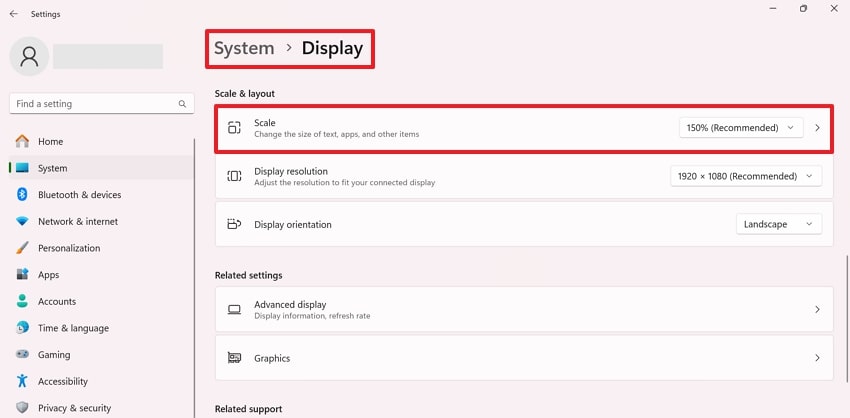
Solution 2. Change the Refresh Rate of Monitors
Another reason for this problem is the mismatched refresh rate, which improves how smoothly the screens work together. When both monitors use the same or compatible rates, they stay better in sync. Upon altering the refresh rate of your monitors, you can effortlessly reduce the stuttering or delay during gameplay. Hence, adhere to the steps below to learn how to resolve when your second monitor lags when playing games:
- Start by heading to the “Settings” on your device and accessing the “System” section.
- Next, opt for the “Display” choice and expand the “Advanced Display” section. Here, alter your monitor's refresh rate in the “Choose Refresh Rate” dropdown box.

Solution 3. Update the Display and Monitor Drivers
Apart from the above solution, it is possible that your PC's display driver is outdated and needs to be updated. As we all know, updating drivers improves how your screen and graphics card communicate. Moreover, they even help users fix any minor bugs and offer better gaming performance. Thus, go through the instructions below to update your driver when your second monitor lags when playing games:
Step 1. To inaugurate, go to the “Device Manager” on your Windows and opt for the “Display Adapter” option to expand it. Now, right-click your preferred driver and choose the “Update Driver” option.
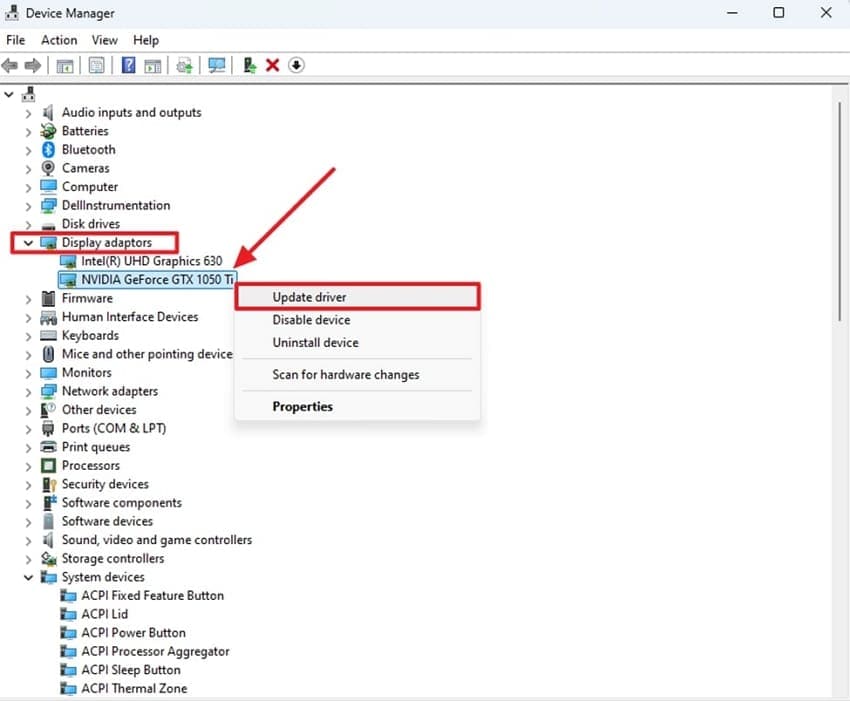
Step 2. When you see a new display on your screen, select the “Search Automatically for Drivers” choice to run the scan.

Solution 4. Disable Hardware Acceleration in Your Browser
In case updating the driver doesn't resolve the issue, try to turn off hardware acceleration of your preferred browser. Basically, hardware acceleration is meant to boost performance, but it can sometimes interfere with the game. When you turn it off, it lets your system focus more on gameplay. Follow the guidelines below to know how you can apply this fix if your second monitor lags when playing games:
Step 1. To initiate, launch your preferred browser and tap the “Three Dots” to choose the “Settings” option.
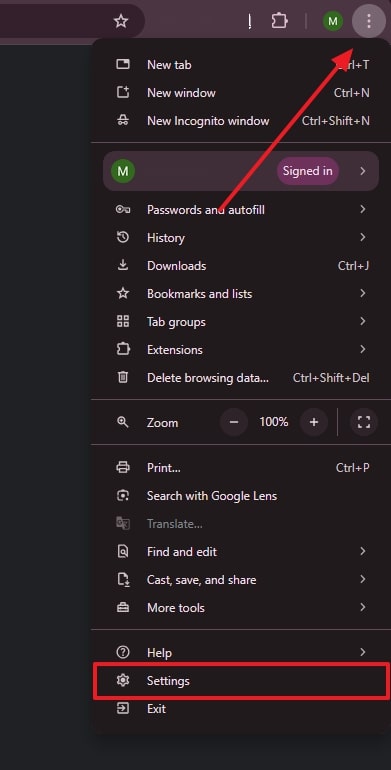
Step 2. When accessing, head to the “System” tab and turn off the “Use Graphic Acceleration When Available” toggle. Afterward, press the “Relaunch” button to restart your browser and resolve the issue.

Solution 5. Turn Off Hardware-accelerated GPU Scheduling
While your second monitor lags when playing games, your device's GPU scheduling might overload your graphics card. Primarily, it is designed to reduce delays, but sometimes it does the opposite. By disabling it, your system can easily handle both screens, which eventually improves the gaming and display smoothness. So, let's dive below to perform this action and hopefully resolve the screen lag dilemma:
- Open your device’s settings and navigate to the “System” tab. Upon seeing the new display, access the “Display” tab and opt for the “Graphics” option.
- After that, disable the “Hardware-Accelerated GPU Scheduling” toggle under the “Advanced Graphics Settings.”
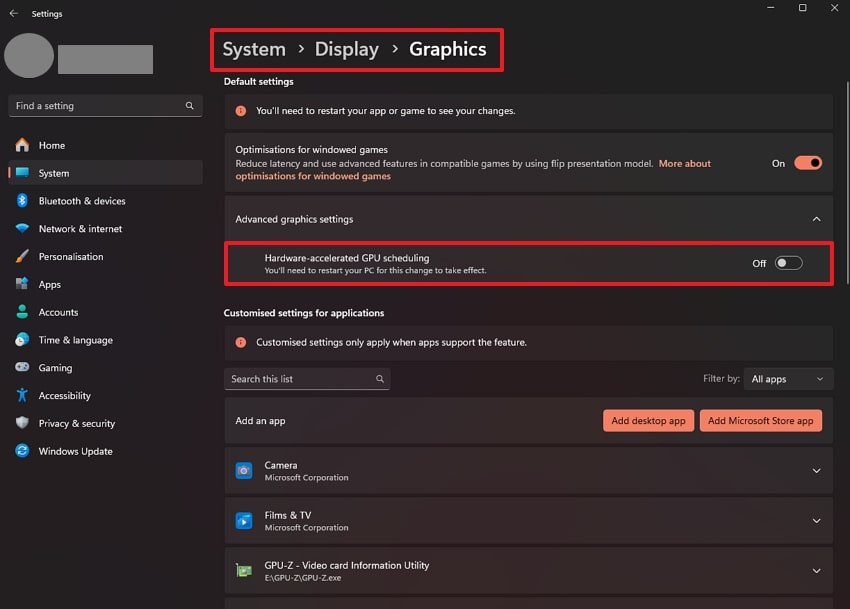
Solution 6. Download and Install All Windows Updates
After applying all the fixes and still not getting the issue resolved, you should try to update your Windows. It basically includes all important fixes for display issues and better support for graphics. Plus, they help your computer work smoothly with two monitors. Hence, go through the guide below to update it when your second monitor lags when playing games:
- Inaugurate this task by accessing your PC’s settings and heading to the “Windows Update” tab. At this screen, press the “Download & Install All” button to resolve the issue if an update is available.
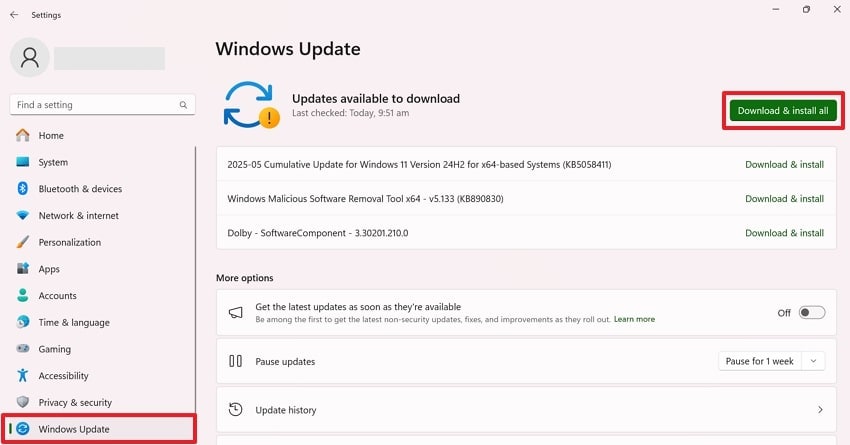
More related articles
Fix Graphics Card Issues: Troubleshoot Errors Like a Pro [2025]
A Complete Guide to Fix Nvidia Graphics Card Problems
How To Fix "There Is A Problem With Your Graphics Card" Error
Pro Tip. How to Fix Laggy or Damaged Videos for Smoother Game Playback
Apart from the second monitor lagging when playing games, gamers have to deal with another major headache with their gameplay recordings. From malware to system crashes, a lot of factors can end up damaging them and making them almost unplayable. As for fixing them, it is highly recommended that Repairit Video Repair be used. This advanced AI video repair tool helps you fix damaged or corrupted videos in over 20 formats.
It basically offers a Quick repair mode for minor problems and an Advanced option for severely broken video files. This advanced repair feature actually uses a working sample video to recover details from the original damaged file. Alongside that, it even enables its users to fix multiple damaged or corrupted videos simultaneously. Upon completing the repair task, you can preview the actual result of your video before downloading it.
After exploring the tool’s advanced features, adhere to the steps below to repair your problematic videos effortlessly:
Step 1. Upon running this advanced tool on your PC, head to the “Video Repair” tab and hit the “Start” button to import your damaged gameplay video files.

Step 2. When the gameplay videos are imported into the “Unrepaired Videos” section, press the “Repair” button to initiate the task.
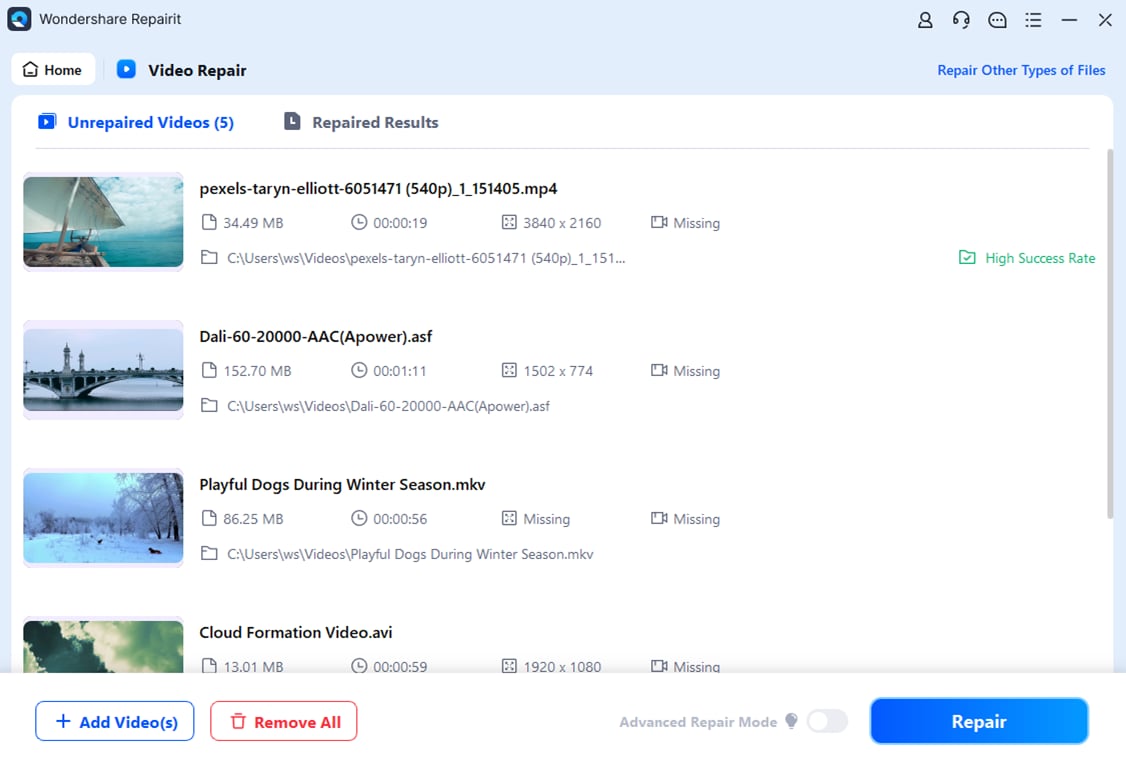
Step 3. Upon waiting for a few moments, hit both the “Save All” and the “Save” buttons to export your repaired gameplay videos to your PC.
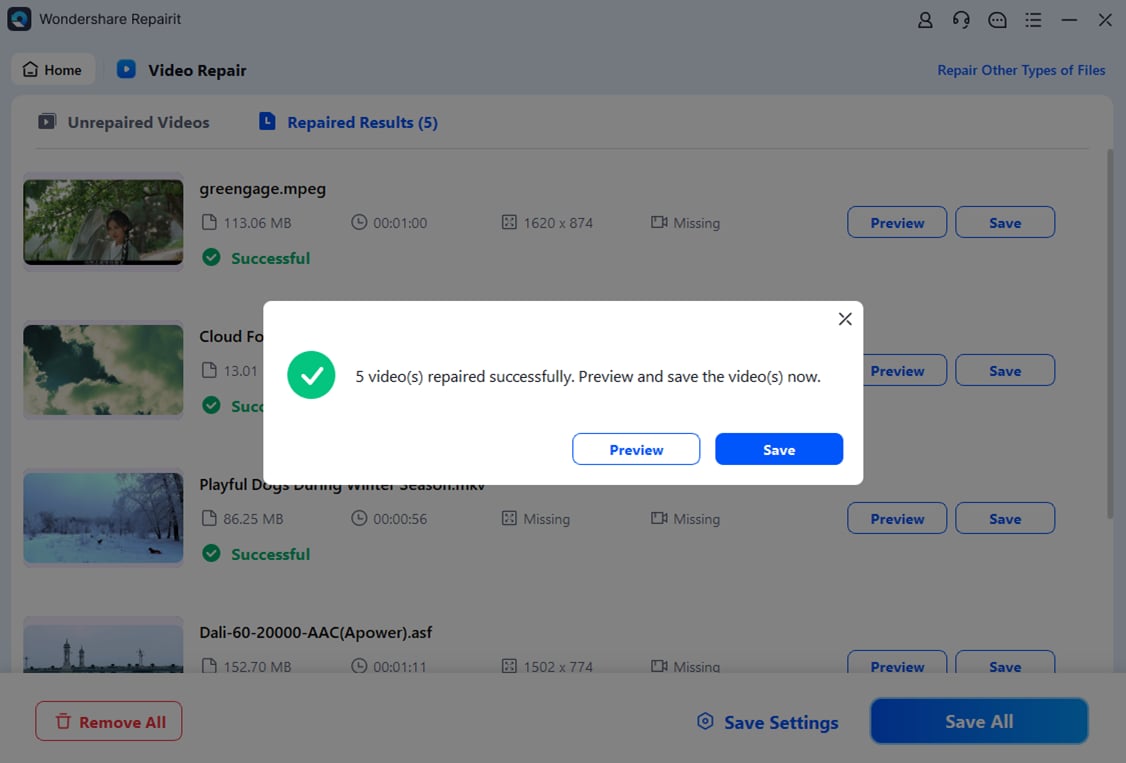
Fix Laggy or Damaged Videos for Smoother Game Playback

Conclusion
To conclude, experiencing issues with your second monitor lags when playing games can destroy a gamer’s fun. This whole article has discovered some of the best workable solutions that can help gamers resolve this problem.
FAQ
Q1. Will using a second graphics card help with dual-screen gaming?
In some cases, opting for a second graphics card can help fix the problem. If your second monitor lags when playing games, dual GPUs may balance the load. Alongside that, this setup needs proper software support and configuration to apply it.Q2. Will lowering my game’s graphics settings help reduce second monitor lag?
It can help because it basically gives your computer more breathing room to handle both screens. This method is easy, especially if your device is not built for heavy gaming. Thus, the graphics are adjusted slowly to find the best balance between visuals and smooth performance.Q3. What should I do if my gameplay videos are damaged or corrupted?
You should opt for the Repairit toolbox, which helps you fix your damaged video files in over 20 formats. It can repair your videos without compromising their original quality. Alongside that, you can fix multiple videos at once and preview them before saving them to your device.


 ChatGPT
ChatGPT
 Perplexity
Perplexity
 Google AI Mode
Google AI Mode
 Grok
Grok
